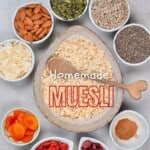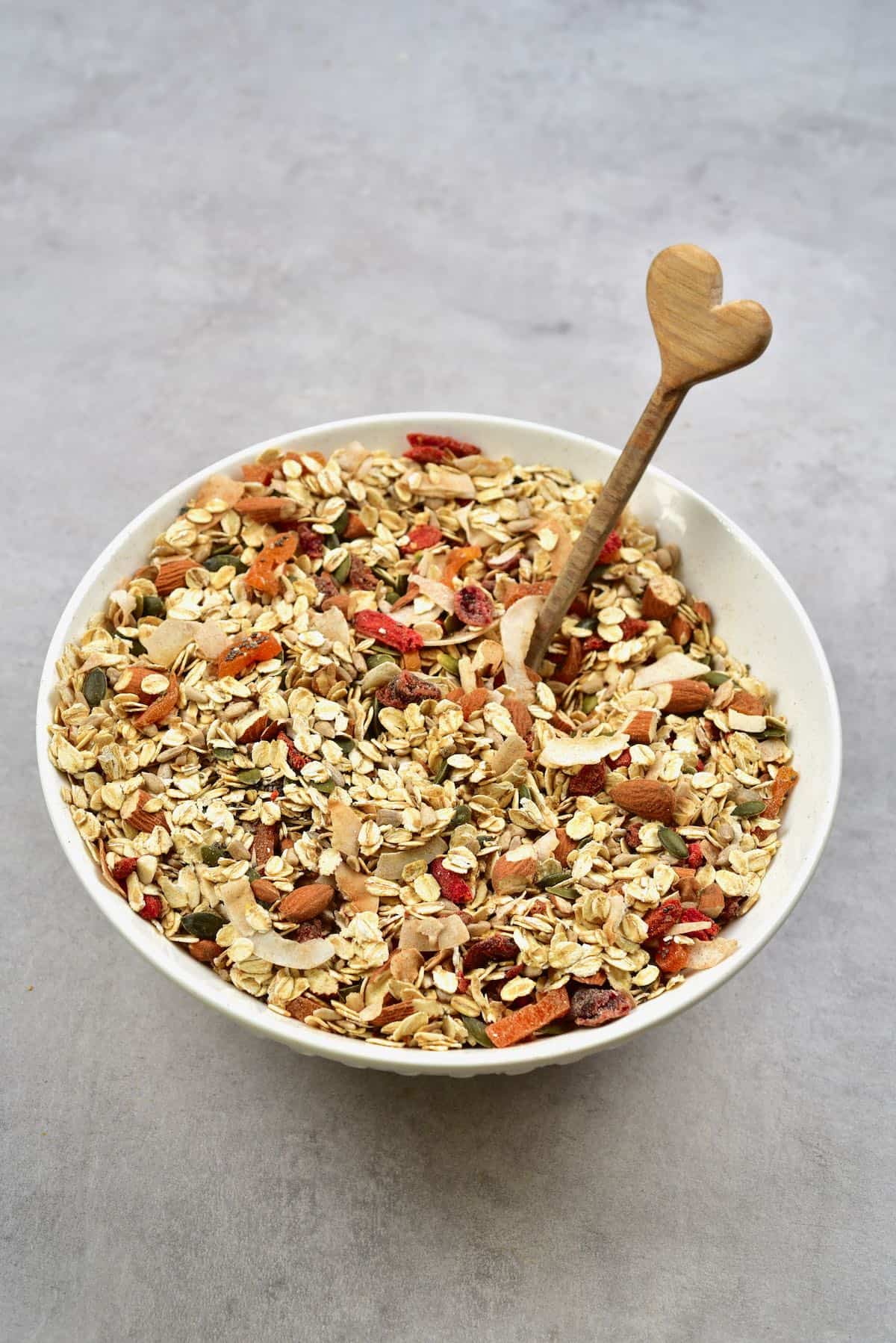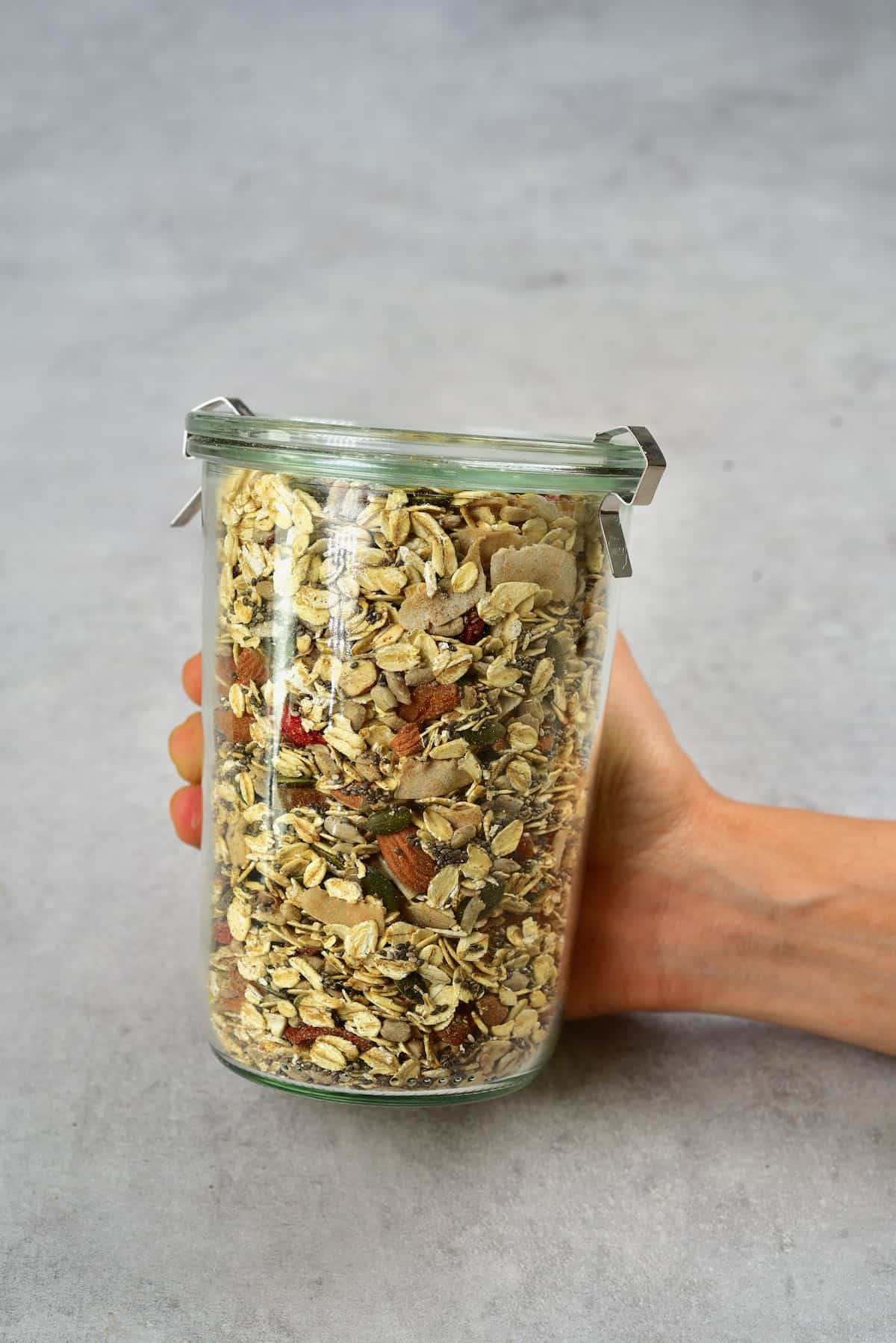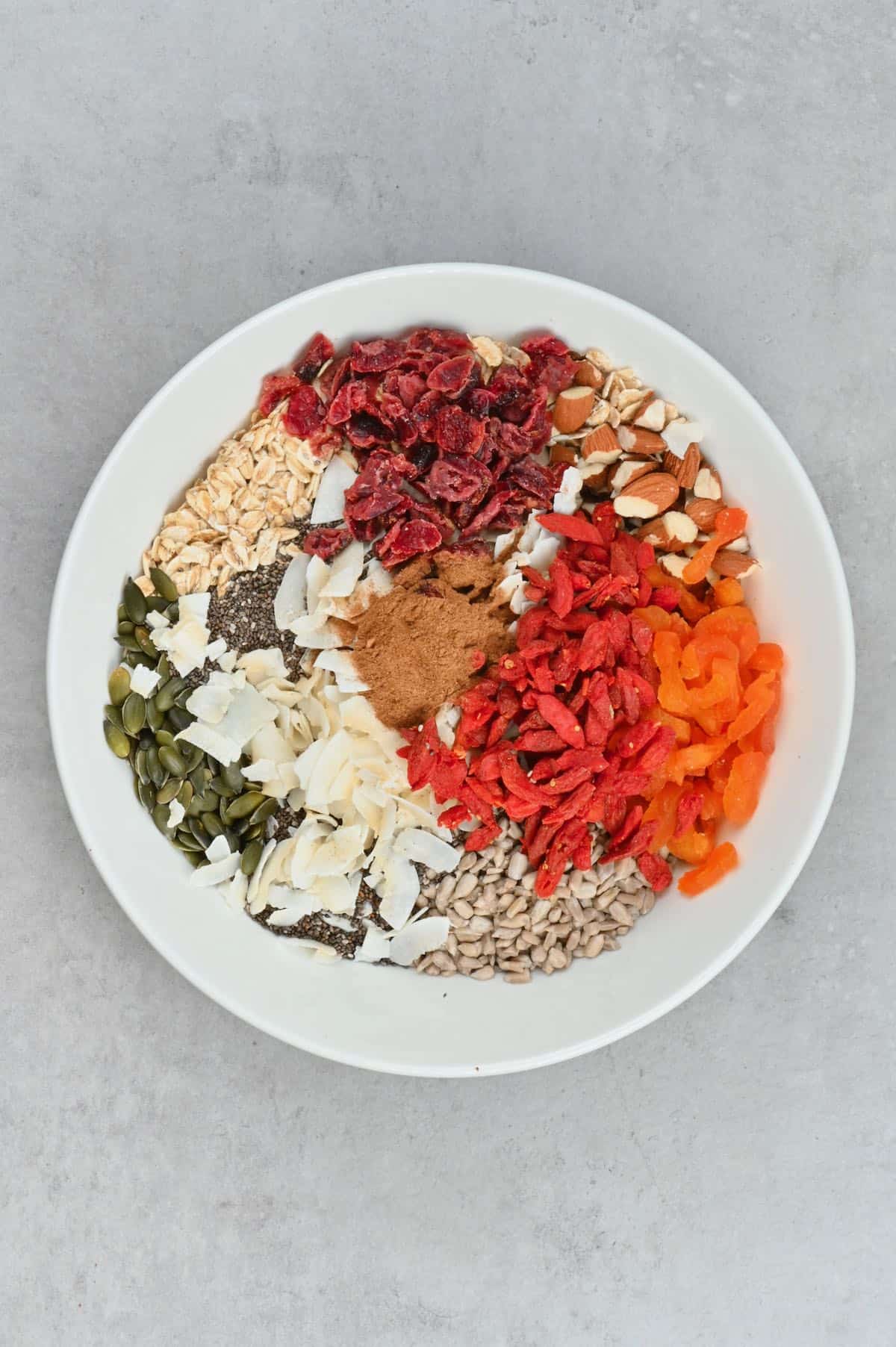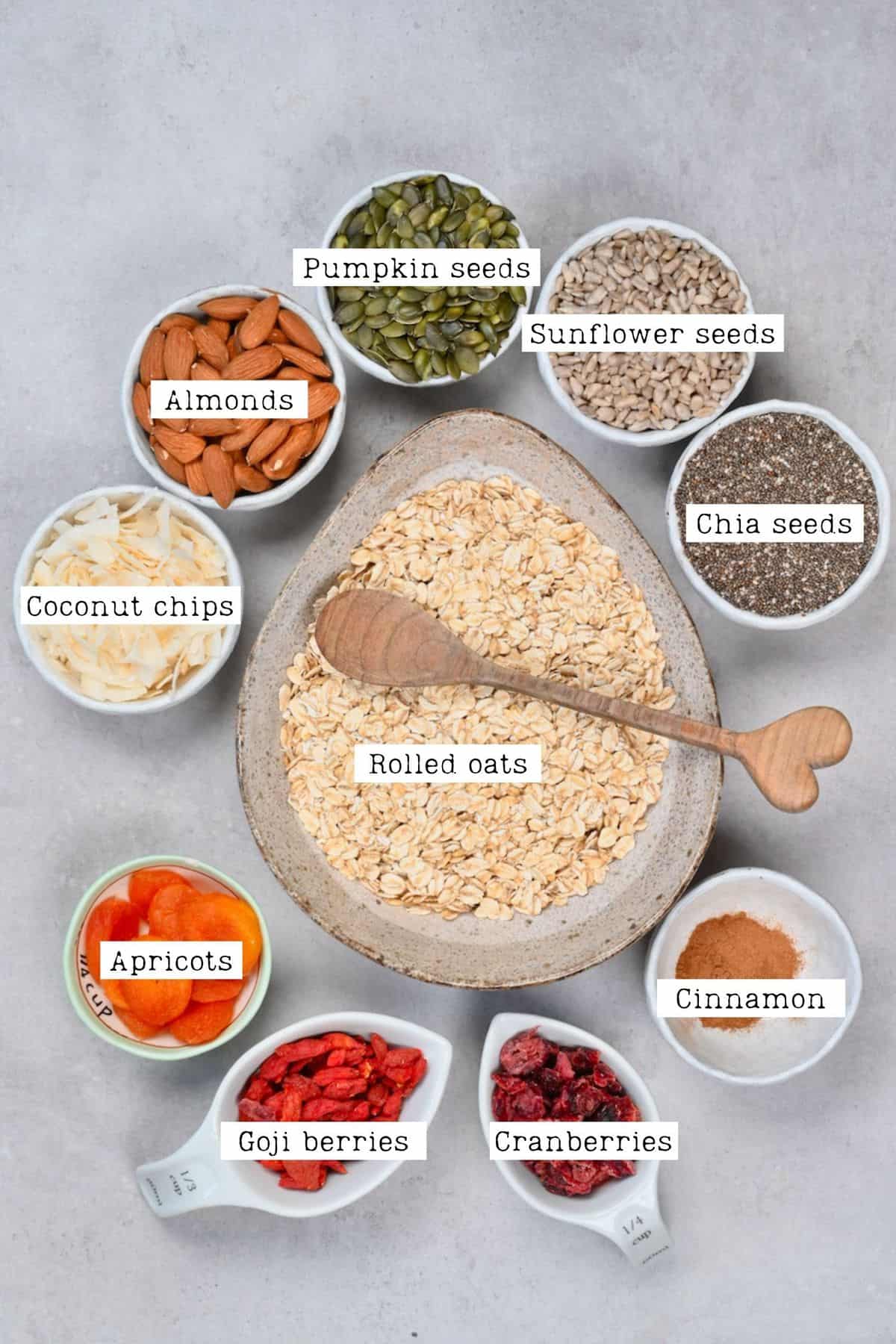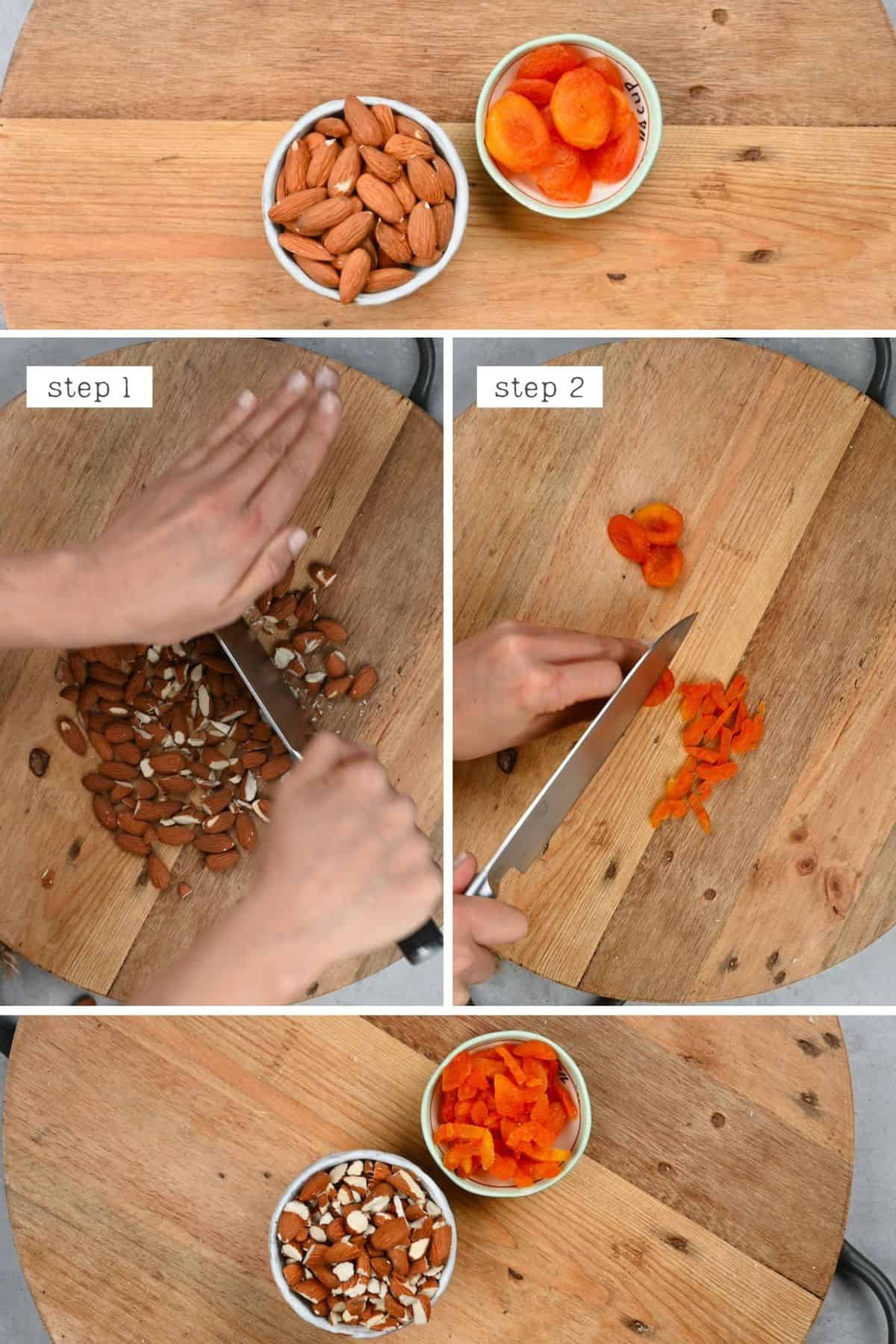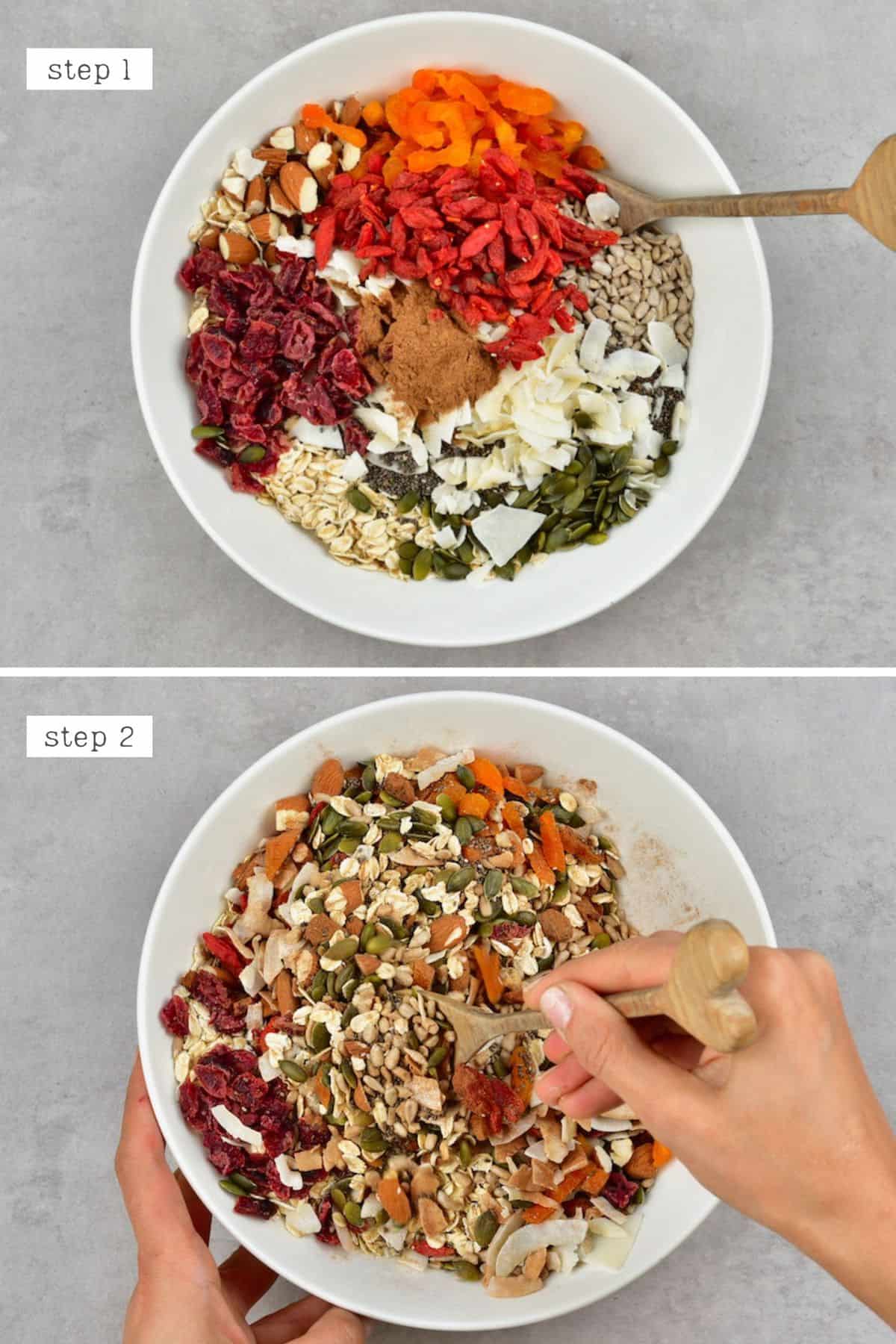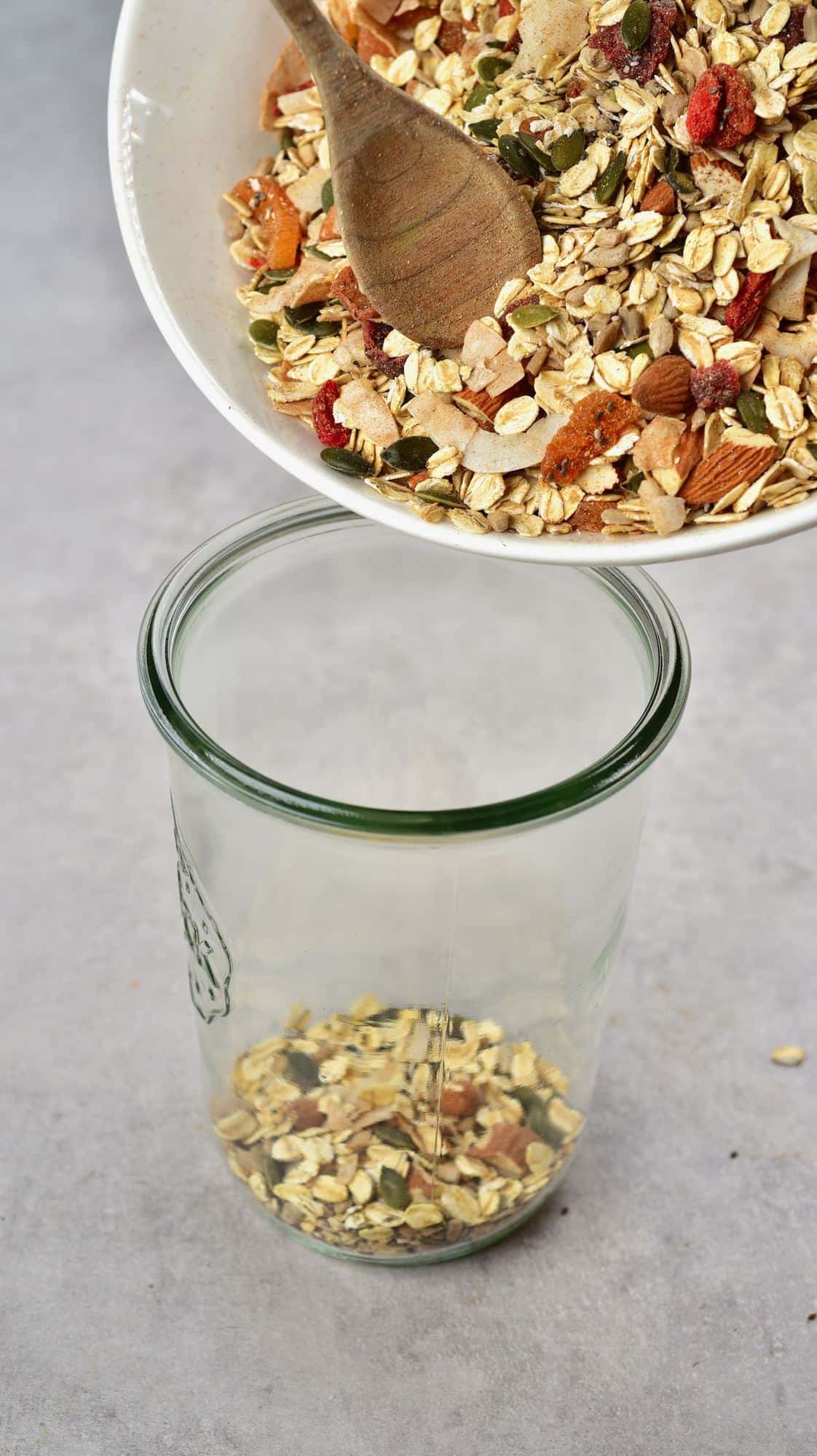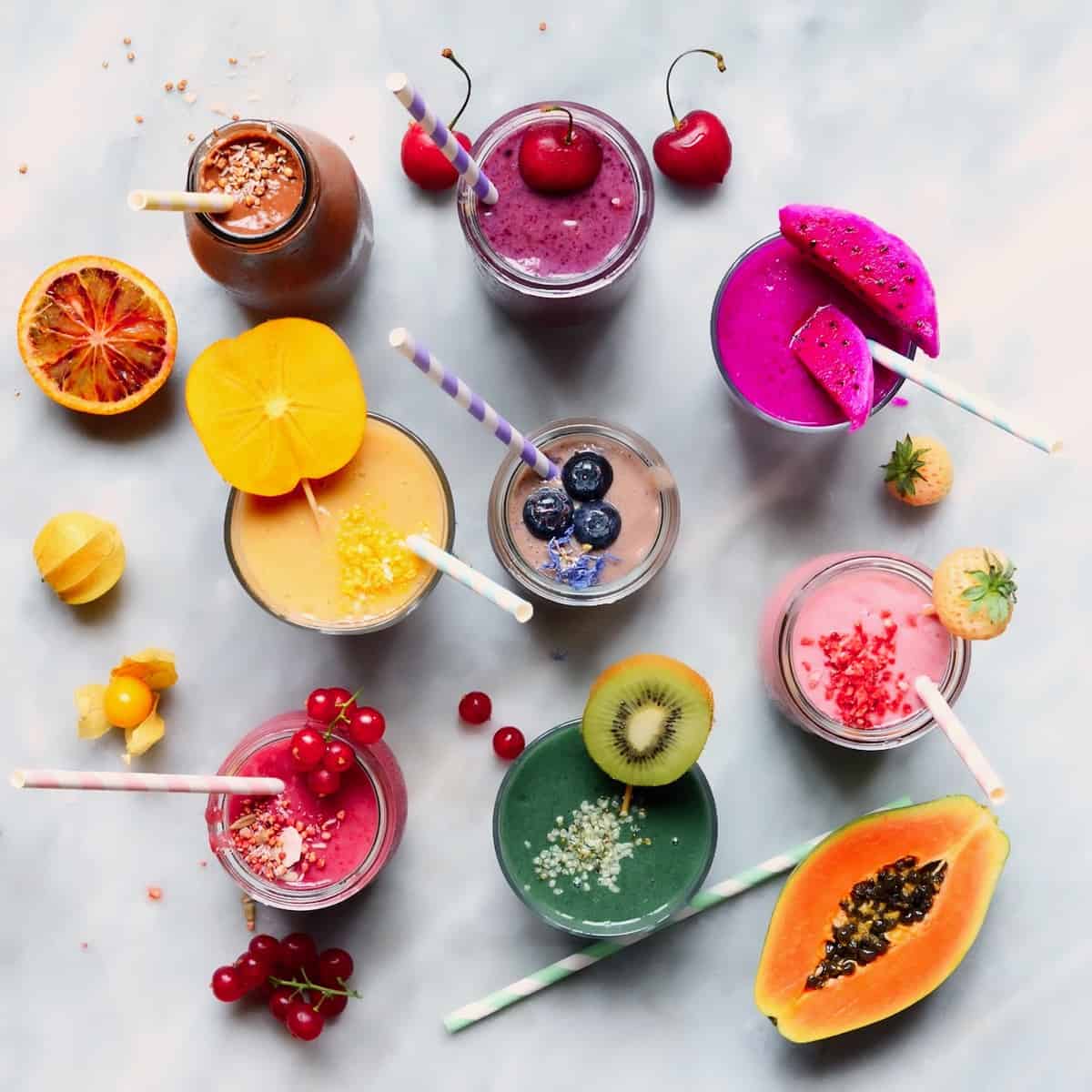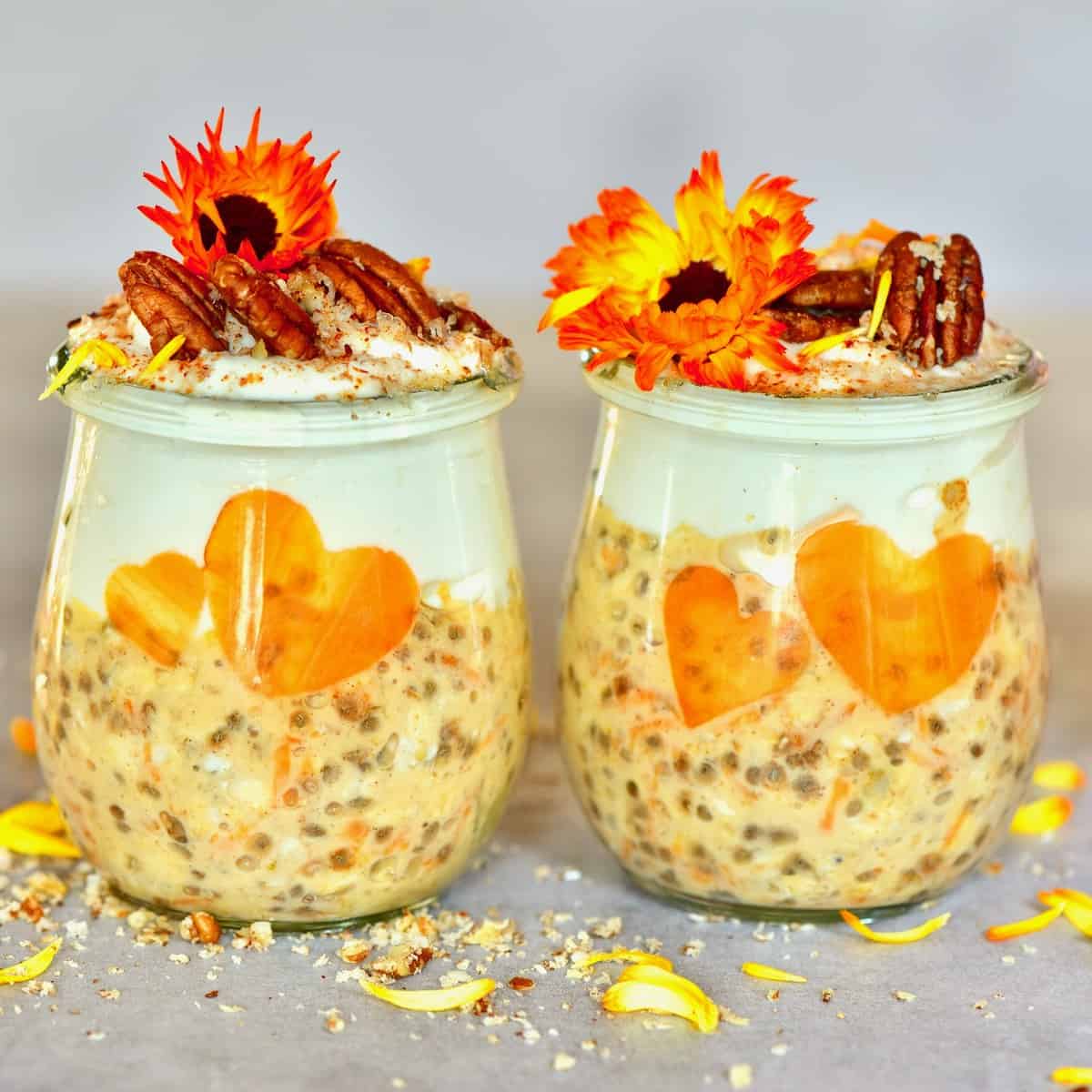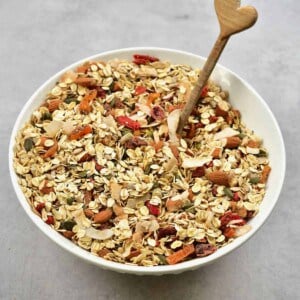Using raw, unprocessed ingredients, this homemade muesli recipe is a healthy, naturally vegan protein breakfast option (although it can be served with dairy if preferred). Homemade muesli is incredibly cost-effective and far cheaper than buying pre-made packs from grocery stores that often include extra sugars and unwanted ingredients. The chosen ingredients are a wonderful combination of crunchy, chewy, nutty, and fruity. Muesli is a protein-and-fiber-rich breakfast, brunch, or even afternoon snack option – perfect for starting the day right with a hearty, wholesome, and filling dish. It’s a wonderful option for those wanting a healthy, low-effort alternative to shop-bought cereals. On days when I don’t want to go to the effort of making dishes like high-protein tofu scrambled ‘egg’, then this quick homemade muesli is a wonderful low-effort, high-protein vegan breakfast. More than that, muesli is also heart-healthy. Oat bran contains a fiber called beta-glucan which can reduce cholesterol levels by up to 10% (source). Meanwhile, the nuts and seeds help to provide protein, omega-3 fatty acids, as well as a slew of vitamins and minerals. Then, of course, the liquid you choose to serve the muesli with also provides extra nutrients. All in all, muesli really checks all the boxes for a healthy, nutrient-dense ‘complete food’ breakfast!
What Is Muesli?
Muesli is a popular breakfast dish usually made up of grains (usually rolled oats), nuts, seeds, fruit, and optionally spices. It can be prepared raw, or lightly toasted – depending on how crunchy you’d like the muesli to be. Unlike granola, which is baked and often contains oil and added sweeteners, muesli is the healthier version – packed with nuts and seeds and fruit, but without the added sugars and oil! The resulting dish is then often served with either milk, yogurt, or fruit juice and allowed to soften for some time (due to the oats) or even left overnight for ‘Bircher muesli’. However, there are several ways that you can enjoy muesli – which I’ll get to further down in the post.
The Ingredients
Muesli is incredibly versatile. As long as you add some of each element, the ingredients are easily swappable and interchangeable. Below is my preferred base, variations, and optional extras.
My Base Mix & Variations
Grains: Rolled oats are my preferred base choice. Make sure to use certified gluten-free oats for gluten-free muesli. You can swap that out with any rolled/flaked grain though: rye, barley, spelt, quinoa, rice, wheat bran/germ, soy oats, etc. Avoid overly processed ‘quick-cook’ options, if possible. You can also create a grain blend. TIP: For a grain-free version, you could use a base of flavored, toasted coconut flakes.Nuts: I used almonds. Feel free to swap this out with your nuts of choice: walnuts, cashew, pecan, brazil nuts, hazelnuts, macadamia, etc.Seeds: I use a blend of sunflower seeds, pumpkin seeds, and chia seeds. You could also use flaxseed, poppy seeds, hemp seeds, etc. You can check out this post for the health benefits of some of the seeds. Dried fruit: I use cranberries, goji berries, apricots, coconut chips (or shredded coconut). You could also use raisins, prunes, dates, apple, mango, sultanas, cherries. You can also add freeze-dried fruits like dried blueberries, banana, strawberries, etc. Spices: I love to add cinnamon. You could also add spices like cardamom, nutmeg, or ginger. You could also add a little vanilla powder.
Optional Extras
Superfood powders: maca powder, cacao powder, açai, lucuma, moringa, etc. Sweetener: I omit sugars, relying on the sweetness of the dried fruits instead. However, if you do find that you need a little extra sweetness, I suggest adding a little fo your favorite natural sweetener when serving (agave, maple syrup). You could alternatively add a ‘dry’ granulated sweetener straight to the large batch of dry muesli – use erythritol or another sugar-free sweetener to keep this recipe sugar-free. Other: It’s also possible to add chocolate to your muesli mixes. For a sugar-free (or low sugar) version, use this Healthy Dark Chocolate. You could also add extras like finely chopped candied ginger.
How To Make Muesli
First, chop the almonds and apricots into smaller pieces.
For Raw Muesli
All you need to do is mix the almond, apricots, and all of the remaining elements in a large bowl. Then move it to a large, airtight container for storage.
For Toasted Muesli
You can toast some or all of the elements within the blend. I prefer to only toast the nuts, seeds, and grains though. To do this, spread them in a single layer over a large baking tray and toast in the oven for 10-15 minutes at 325ºF/160ºC, until lightly golden and aromatic. Nuts and seeds can take less time than the oats – 7-8 minutes, though I just chuck everything in together to save time and it always works well. Once toasted, allow to cool and then mix with the remaining ingredients and store in an airtight container.
How To Store
Homemade muesli cereal should be stored in an airtight container at room temperature, for 1 month. There’s no need to refrigerate the mixture unless you plan to blend/chop the seeds finely (this may also reduce the shelf life, though it depends on the seed in question). If you decide to make a meal-prep batch of overnight oats style muesli, then these will last in the fridge for 5-6 days.
How To Eat Muesli
The traditional way to eat muesli is with either milk (like any of these plant-based milk options; I love to use almond milk), juice (like apple juice or this homemade orange juice), or yogurt (like this almond yogurt, coconut yogurt, or dairy greek/natural yogurt) of your choice and allow it to soak for 10-15 minutes, to allow the oats to soften. You can also prepare this in the Swiss bircher muesli fashion by soaking it overnight in the liquid of your choice (similar to overnight oats). Add any additional fresh fruit or ‘sprinkles’ in the morning and enjoy it. For a traditional bircher muesli option, add finely grated apple and a little lemon juice. Alternatively, serve your homemade muesli warm as an oatmeal replacement. Add the plant-based milk of your choice and microwave it for 60-90 seconds or heat on the hob for 5-7 minutes for a delicious, vegan protein breakfast option.
Other suggestions include
Soak the muesli cereal in homemade kombucha or a tea for an alternative to milk or juice. Adapt the muesli into breakfast bars, flapjacks, and other grab-n-go breakfast options.Sprinkle over smoothie bowls as a healthy, protein, and flavor-packed nutritious topping. Use it within baked goods, including pancakes, cookies, muffins, and cakes.
Other Healthy Breakfast Recipes
Guide to Healthy Smoothie RecipesThe Best 5 Healthy Dessert Inspired Overnight OatsChocolate Covered Healthy Fruit and Nut BarsBircher Muesli (The Original Overnight Oats)Mango Chia Pudding Bowl (with Crispy Oats and Yogurt)How To Make Oatmeal On The Stove (Oatmeal Porridge)
If you give this homemade muesli recipe a try, then let me know your thoughts in the comments. Also, feel free to tag me in your recreations @AlphaFoodie.


